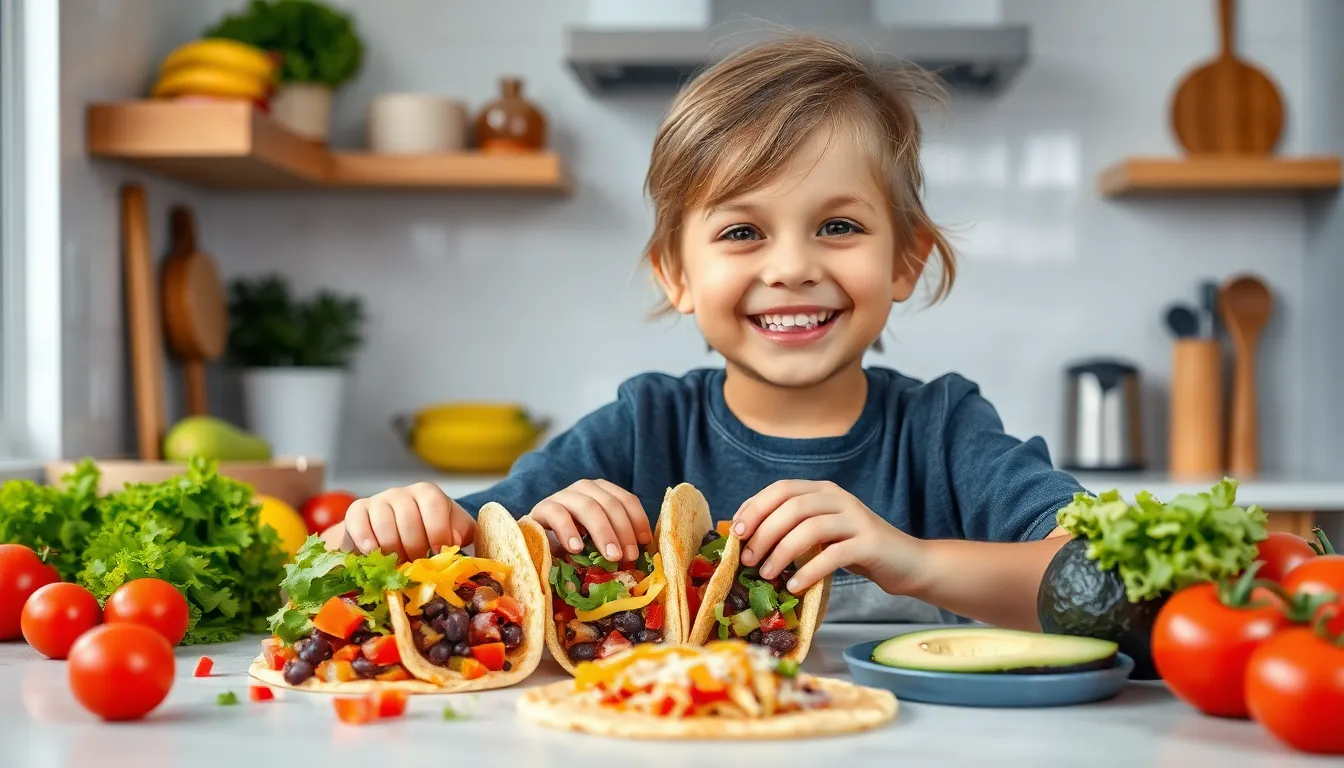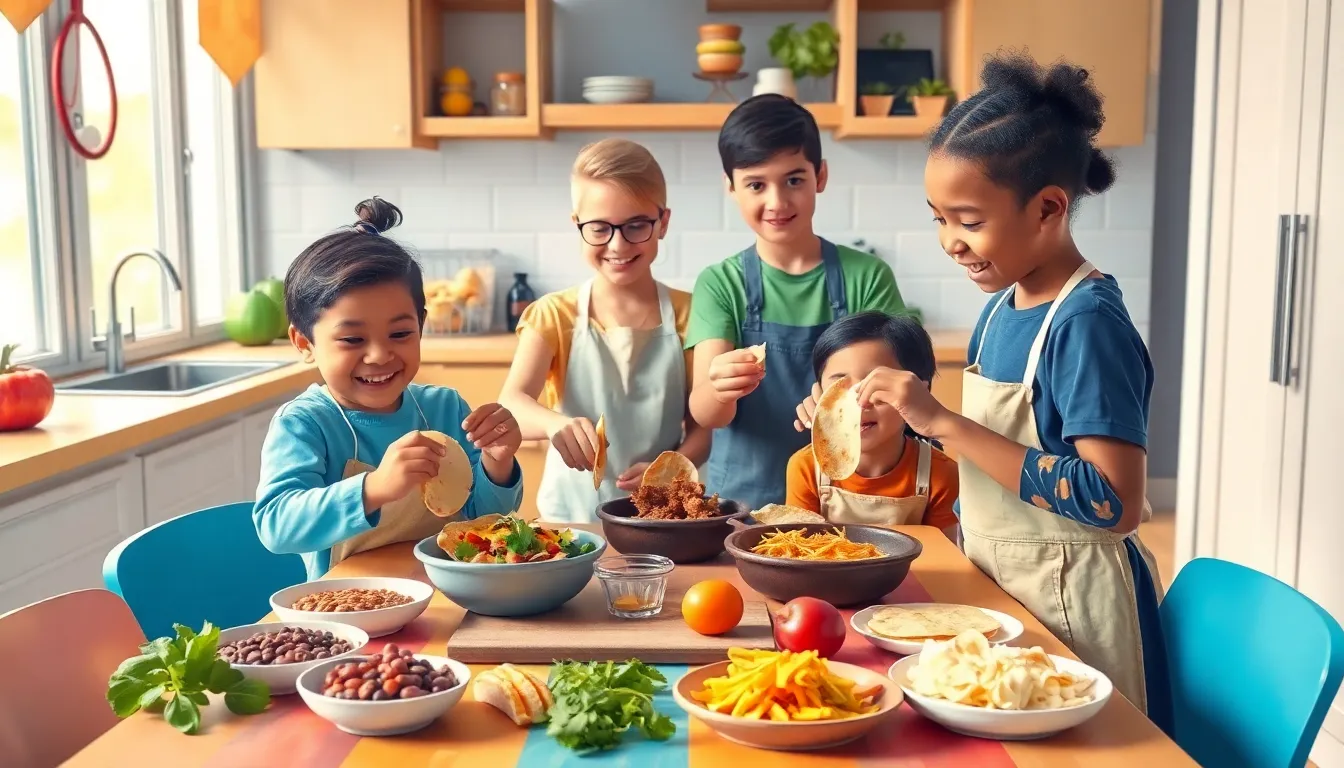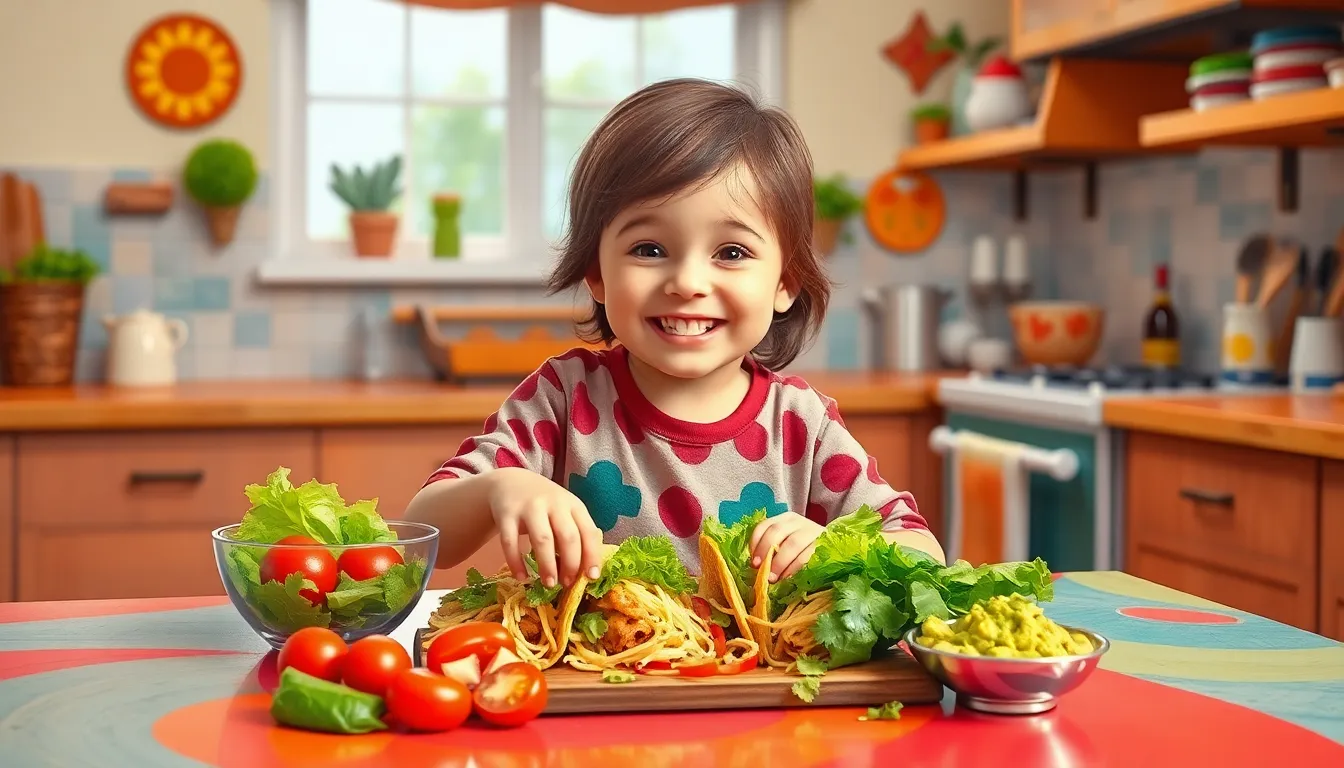Table of Contents
ToggleGetting kids to eat healthy can feel like trying to convince a cat to take a bath. But what if there’s a way to make mealtime an adventure? Enter ethnic recipes! These delightful dishes from around the world not only tickle the taste buds but also introduce little ones to diverse cultures, making them mini food explorers.
Importance Of Ethnic Recipes For Children
Ethnic recipes offer unique opportunities for children to experience diverse cultures through food. Exposure to various cuisines fosters an appreciation for global traditions. Encouraging kids to help in the kitchen promotes teamwork and builds confidence in their cooking skills. Different spices and flavors stimulate their palates, making mealtime more enjoyable.
Incorporating these recipes into family dinners can lead to important discussions about heritage and family history. Cooking together creates lasting memories and strengthens family bonds. Research shows that children exposed to diverse foods tend to develop healthier eating habits.
These recipes can also spark curiosity about ingredients and cooking methods used in other countries. Exploring dishes from different cultures broadens children’s understanding of the world around them. When kids engage in preparing ethnic meals, they gain insights into nutrition and sustainability.
Serving ethnic dishes at home encourages open-mindedness and acceptance of diversity. Children who learn about various cultural foods may become more adventurous eaters. An appreciation for different cuisines can enhance social experiences during family gatherings and celebrations.
Overall, ethnic recipes play a vital role in children’s development. They not only make meals exciting but also cultivate a sense of global citizenship. By embracing these diverse culinary traditions, families nurture a more inclusive and enriching dining experience.
Popular Ethnic Recipes For Children


Exploring various ethnic recipes provides children with tasty, healthy options for meals. These dishes not only introduce new flavors but also promote cultural appreciation.
Asian Cuisine
Sushi rolls represent a fun and interactive way for kids to experiment with food. Simple variations can include cucumber, avocado, or cooked shrimp, making them safe for young eaters. Stir-fried rice offers another easy option, as it incorporates vegetables and proteins like chicken or tofu. Kids enjoy personalizing this dish by selecting their favorite ingredients, enhancing their culinary creativity. Additionally, dumplings filled with vegetables or meat serve as bite-sized treats, perfect for little hands.
Mexican Cuisine
Tacos present an engaging dining experience, allowing children to build their own meals. Soft or hard shells can be filled with a variety of ingredients such as beans, cheese, or chicken. This flexibility promotes independent choices while ensuring a nutritious meal. Quesadillas also make for a quick and delightful option, with melted cheese and assorted fillings like spinach or peppers. Kids can practice cooking skills by helping to grill or bake these dishes. Finally, a simple salsa made from tomatoes and avocados introduces children to fresh flavors.
Mediterranean Cuisine
Hummus serves as a healthy and tasty dip for children, made from chickpeas and tahini. Served with pita bread and vegetable sticks, it encourages nutritious snacking. Falafel, soft or crispy, provides a delicious vegetarian option packed with protein. Kids enjoy forming the small patties and learning about flavors from spices. Greek yogurt with honey and fruit makes a delightful dessert, combining sweetness with nutrition. Lastly, a Mediterranean salad with cucumbers, tomatoes, and feta cheese offers fresh tastes kids can assemble themselves.
Benefits Of Introducing Ethnic Foods
Ethnic foods offer numerous advantages for children’s growth and development. These dishes enhance cultural awareness and provide nutritional variety.
Cultural Awareness
Exposing children to ethnic foods cultivates cultural awareness. They learn about traditions, customs, and the heritage of various communities. Each dish tells a story, allowing kids to connect with different cultures. Children become more receptive to diversity through shared meals, fostering an appreciation for global traditions. Engaging with new cuisines nurtures a sense of belonging in a multicultural society. This experience encourages open-mindedness and respect for different backgrounds, enriching their outlook.
Nutritional Variety
Incorporating ethnic recipes expands children’s nutritional variety. Different cuisines introduce a wide range of ingredients, vitamins, and minerals. These dishes often feature fruits, vegetables, grains, and proteins that aren’t commonly found in typical meals. Exposure to diverse food options helps promote healthier eating habits over time. Children develop a palate that embraces new flavors and textures, reducing dependence on processed foods. This variety supports balanced nutrition and encourages kids to explore different dietary choices.
Tips For Cooking With Children
Engaging children in cooking fosters excitement and learning. Choose simple recipes that are appealing and manageable for kids, which builds their confidence. Preparing ethnic dishes offers opportunities to explore new flavors while teaching them about different cultures.
Use age-appropriate tasks during the cooking process. Younger children can rinse vegetables and mix ingredients, while older kids might chop or sauté. Establish a safe cooking environment, ensuring they wear aprons and understand kitchen safety rules.
Encourage creativity by allowing children to customize their dishes. For example, let them choose toppings for tacos or fillings for dumplings. Such choices enhance their interest and investment in the meal.
Incorporate educational elements by discussing the origins of ingredients. Sharing fun facts about where spices come from or how certain dishes are traditionally served can spark curiosity. This knowledge adds depth to the cooking experience, providing context for the flavors they’ll enjoy.
Set aside dedicated cooking time. Creating a regular family cooking night promotes bonding and teamwork among family members. Use this time not just for preparation but also for sharing stories or learning about each other’s favorite meals.
Practice patience throughout the cooking process. Mistakes may happen, but they provide learning opportunities. Celebrating successes, no matter how small, boosts children’s confidence and enjoyment in the kitchen.
Ultimately, cooking together turns mealtime into a fun, educational adventure. Through ethnic recipes, children expand their culinary horizons and develop an appreciation for cultural diversity while creating lasting memories.
Embracing ethnic recipes for children opens a world of culinary exploration and cultural appreciation. These dishes not only make mealtime enjoyable but also nurture a sense of curiosity and acceptance in young minds. By engaging kids in the kitchen and introducing them to diverse flavors, families can create lasting memories while fostering healthier eating habits.
The journey through different cuisines enhances children’s understanding of global traditions and encourages them to become adventurous eaters. As they learn about various ingredients and cooking methods, they develop valuable skills that extend beyond the kitchen. Ultimately, incorporating ethnic recipes into family meals enriches their lives and builds a foundation for a more inclusive and culturally aware future.






